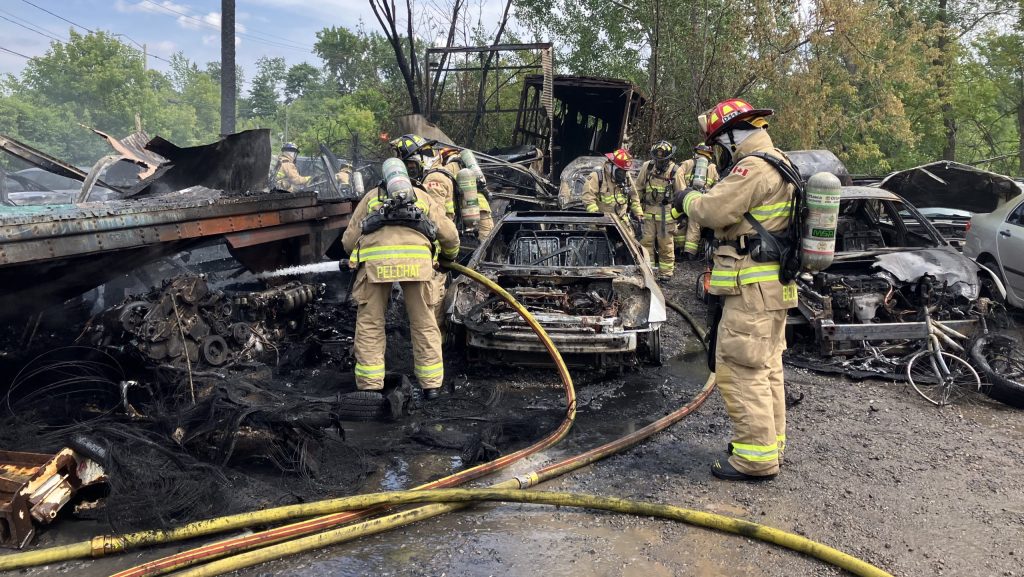Takeaways from AP analysis on the rise of world’s debt-laden ‘zombie’ companies

Posted Jun 7, 2024 01:46:54 AM.
Last Updated Jun 7, 2024 01:54:09 AM.
NEW YORK (AP) — An Associated Press analysis found the number of publicly-traded “zombie” companies — those so laden with debt they’re struggling to pay even the interest on their loans — has soared to nearly 7,000 around the world, including 2,000 in the United States.
And many of them soon could be facing their day of reckoning, with due dates looming on hundreds of billions of dollars of loans they may not be able to pay back.
“They’re going to get crushed,” Valens Securities Managing Director Robert Spivey said of the weakest zombies.
Here are the key takeaways from the AP’s analysis:
WHAT IS A ZOMBIE COMPANY?
Zombies are commonly defined as companies that have failed to make enough money from operations in the past three years to pay even the interest on their loans. Their numbers have swelled because low interest rates for years allowed companies to pile up plenty of cheap debt, only to be whiplashed by stubborn inflation that has pushed borrowing costs to decade highs.
AP’s analysis found their ranks in raw numbers have jumped over the past decade by a third or more in Australia, Canada, Japan, South Korea, the United Kingdom and the U.S., including companies that run Carnival Cruise Line, JetBlue Airways, Wayfair, Peloton, Italy’s Telecom Italia and British soccer giant Manchester United.
Many zombies lack deep cash reserves, and the interest they pay on many of their loans is variable, not fixed, so higher rates are hurting them right now.
WHY ARE ZOMBIES A CONCERN FOR THE ECONOMY?
As the number of zombies has grown, so too has the potential damage if they are forced to file for bankruptcy or close their doors permanently. Companies in AP’s analysis employ at least 130 million people in a dozen countries.
Already, the number of U.S. companies going bankrupt has hit a 14-year high, a surge expected in a recession, not an expansion. Corporate bankruptcies have also recently hit highs of a nearly a decade or more in Canada, the U.K., France and Spain.
For the first few months of this year, hundreds of zombies refinanced their loans as lenders opened their wallets in anticipation that the Federal Reserve would start cutting in March. That new money helped stocks of more than 1,000 zombies in AP’s analysis rise 20% or more in the past six months.
But many did not or could not refinance, and time is running out.
Through the summer and into September, when many investors now expect the first and only Fed cut this year, zombies will have to pay off $1.1 trillion of loans, according to AP’s analysis, two-thirds of the total due by the end of the year.
Some experts say zombies may be able to avoid layoffs, selloff of business units or collapse if central banks cut interest rates soon, though scattered defaults and bankruptcies could still drag on the economy.
For its part, Wall Street isn’t panicking. Investors have been buying stock of some zombies and their “junk bonds,” loans rating agencies deem most at risk of default. While that may help zombies raise cash in the short term, investors pouring money into these securities and pushing up their prices could eventually face heavy losses.
“If rates stay at this level in the near future, we’re going to see more bankruptcies,” said George Cipolloni, a fund manager at Penn Mutual Asset Management. “At some point the money comes due and they’re not going to have it. It’s game over.”
HOW STOCK BUYBACKS HURT ZOMBIES
The dangers of companies piling on debt has been warned about by credit rating agencies and economists for years as interest rates fell but got a big push when central banks around the world cut benchmark rates to near zero in the 2009 financial crisis and then again in the 2020-21 pandemic.
It was a giant, unprecedented experiment designed to spark a borrowing binge that would help avert a worldwide depression. It also created what some economists called a credit bubble that spread far beyond zombies, with low rates that also enticed heavy borrowing by governments, consumers and bigger, healthier companies.
What set many zombies apart was that their debt was not used to expand, hire or invest in technology, but on such things as buying back their own stock.
These so-called repurchases allow companies to “retire” shares, or take them off the market, a way to make up for new shares created for top executives to boost their pay packages. But too many stock buybacks can drain cash from a business.
That was the case in the zombie failure of Bed Bath & Beyond. The retail chain that once operated 1,500 stores struggled for years, but its heavy borrowing and decision to spend $7 billion in a decade on buybacks played a key role in its downfall. Pay for just three top executives topped $140 million, according to executive data firm Equilar, even as its stock sunk from $80 to zero. Tens of thousands of workers in all 50 states lost their jobs as the chain spiraled to its bankruptcy filing last year.
Bernard Condon, The Associated Press








